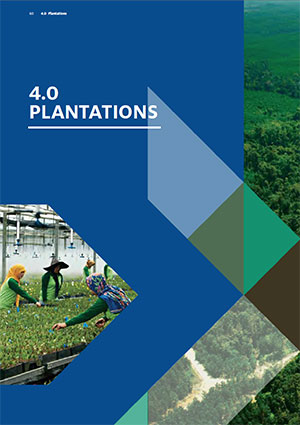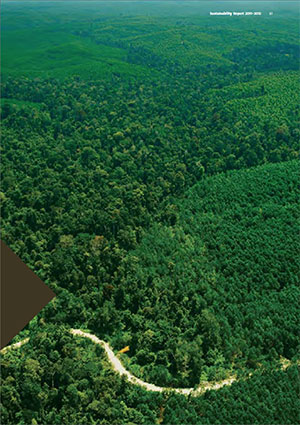Since establishment, APRIL has had a strict “no burn” policy within our concessions. We also ensure adherence to this policy by our supply partners. We do not use fire in the process of land clearance or plantation establishment.
Fibre from trees is the key raw material in the pulp and paper process, so any fires within our concessions reduce our commercial returns. We therefore act quickly to extinguish fires that do occur in or near our concessions.
Fires in our concessions occur for two main reasons. The first is when fires in land used by local communities within our concessions spread to our plantation or conservation areas. The second is when fires started by third parties outside our concession areas spread into our concessions.
Burning is widely used by small farmers as an inexpensive way to prepare their land for farming activities. During Indonesia’s dry season, these activities are intensified and this can be the key source of fires that occur in our concession areas.
APRIL is committed to United Nations Food and Agriculture Organization (FAO) Fire Management Guidelines, which include ongoing commitments to improve fire management through policy, regulation, procedures, plans and implementation.
We have a Fire Danger Rating System, which includes analysis of weather conditions and appropriate preventative and precautionary measures.
APRIL has built comprehensive fire management capability, investing more than US$5 million in manpower, equipment and training.
We now have 665 rapid response team members available to fight and prevent fires. The equipment used by our firefighters includes aerial, land and water-borne vehicles. We have also helped establish 22 community-based fire prevention and control groups, working closely with local communities and providing education, training and equipment.
Fire management objectives include detection before fires reach 0.1 hectares in size, fire suppression within two hours of reporting, and containment within 48 hours to an area of less than 10 hectares. Our performance against these objectives in 2011 and 2012 is shown in the table below.
Figure 44: RESULTS OF APRIL FIRE MANAGEMENT PROGRAMME (INCLUDING SUPPLY PARTNERS)
We undertake regular land, air and water patrols and use satellite imagery and direct field verification to detect and map fire risks and fires.
APRIL collaborates with government agencies in fighting fires near to our concessions. Through our Community Development Programme, we work with local farmers in education on fire prevention and in alternative farming methods, such as natural mulching techniques, that can replace the traditional use of fire.
Illegal burning practices detected by APRIL are reported to police and forestry authorities.

